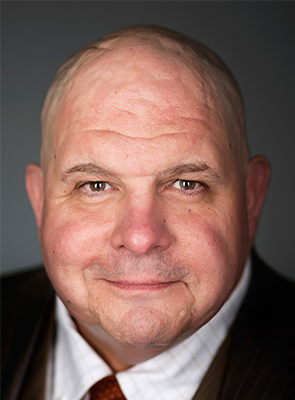Greg Crabtree is a speaker, author, entrepreneur and financial expert. Crabtree has used his entrepreneurial skills to develop Crabtree, Rowe & Berger, PC, a CPA firm focused solely on the needs of entrepreneurs, helping them build the economic engine of their businesses. I invite you to read my interview with Greg as he shares his beliefs on small business ownership and entrepreneurial management.
Mike Goldman: You mention in your book that it’s important for a business owner to take a market-based wage vs. just drawing money out of profits. Why is this important?
Greg Crabtree: We have found that when the owner confuses “you get paid a salary for what you do and a return on what you own”, you lose clarity on how the business is truly performing. This is the biggest distortion in privately held companies. No matter if it is being done for tax purposes, ego or ignorance, it is the first thing we have to address in getting to true business performance.
We strongly recommend that owners stop playing games with their compensation going forward so that they do not have to do Mental Olympics to figure out true business performance. We have many success stories of getting owners to buy in on this idea and the business taking off in profitability because of the clarity created. The increased performance of the business made the supposed “tax savings” insignificant to the new level of profitability.
It is also essential in multi owner businesses where the owners pay themselves equally instead of by role. No two people are worth the same amount of pay every year so if you pay the owners the same amount, somebody is getting the short end of the deal.
MG: You provide consulting services to help entrepreneurs manage their finances. What is the biggest roadblock small business owners face when it comes to money matters in the early stages of a company?
GC: An entrepreneur’s lack of truthful data to manage by has been the biggest issue causing money problems. Except for the 5% or less of entrepreneurs who have a good grasp of finance, the rest are swimming in a pool of data that makes no sense to them.
Our process helps all entrepreneurs attack this problem with 4 steps to get truthful data you can manage by:
-
Eliminate distortions caused by owner compensation and owner occupied real estate.
-
Set profit targets using the Simple Numbers profit model
-
Use Labor productivity concepts to drive profitability with the business you have before you try to grow
-
Understand the impact of the 4 Forces of Cash Flow (Taxes, Debt, Core Capital and Dividends) You can only discuss Cash Flow AFTER you are profitable.
MG: In your book, Simple Numbers, Straight Talk, Big Profits!, you say that paying more taxes is a good thing and you encourage business owners to focus on increasing profit rather than lowering taxes. Can you explain a little what you mean by this and why this is beneficial in the long run?
GC: Most entrepreneurs incorrectly task their accountants about taxes. If you tell me that you do not want to pay taxes, the easiest approach to accomplish this is to have you spend (i.e. waste) your profits. The problem with that concept is that is leaves you forever under capitalized and you never build any wealth with your business.
The number #1 Key Performance Indicator of true wealth creation is “how big of a check did you write to the IRS last year?” If you did not write a big check to the IRS, there are only two possibilities, you either made no profit or you cheated. Both are bad!
Most accountants and tax advisors tell you they “saved” you taxes when all they did was move it to another year at potentially a higher rate of tax.
MG: The idea of using a Labor Efficiency Ratio (LER) to better manage and project staffing levels is fascinating to me. Can determining the ideal labor spend really be that scientific? What challenges have you seen when companies attempt to implement the LER?
GC: The Labor Efficiency Ratio (LER) has been a huge discovery in our analysis of profit models. The further refinement of LER to distinguish Direct LER from Management LER has given entrepreneurs an ability to put both hands on the wheel of their business. My original book only looked at a single LER but I contributed a chapter to Verne Harnish’s book Scaling Up (Chapter 13) where I show a case study of how to use LER to management business.
When it comes to Direct LER (Gross Margin per Direct Labor $), each industry and even each business has their own signature rate depending of the game plan of how they use their labor. As a general rule, Direct LER will be higher when you have to spend considerable active management time for that group ($3.50 and up). You can also get a high Direct LER when you use proprietary technology to enhance labor output ($5 and up). As labor rates go up and the employees are more self managed, Direct LER goes down. Professional service industries are generally close to $2.
For Management LER (Contribution Margin per Management Labor $), we have actually seen a tight correlation to 10% or better profit needing $3.5 to $4. We think this is because the way our Simple Numbers Profit Model isolates the business engine from the business chassis (i.e. structure) that runs the engine. The marketplace will only give you so much labor to manage the output (salary cap) and be profitable.
MG: I’ve seen many situations where the CFO is the only member of the leadership team that really understands the financials (and sometimes not even them!). How important is it for all members of the leadership to be literate in reading the financial statements?
GC: We are huge fans of Open Book management. Our Simple Numbers Model makes it much easier to at least share the business engine section of the P&L (Revenue, Gross Margin, Contribution Margin). As I often say “a man who aims at nothing hits it with amazing accuracy!”.
With the Simple Numbers Model, your Critical Number becomes Contribution Margin. It is the highest value number on the P&L since it has no distortion or discretion in determining it. If you can forecast Contribution Margin dollars, I can predict every other number in the P&L. As long as you keep Management Labor Efficiency at the right rate, you can almost guarantee profitability.
Direct LER is a great way to discuss compensation with your team. We are fans of paying market based wages. But if I give someone a raise, there is a definitive amount of productivity that has to occur to adjust for the wage increase. It also helps you discuss with your team when you are “paying ahead” for future performance instead of paying them for where they are.
To learn more about Greg, visit SimpleNumbers.com.






